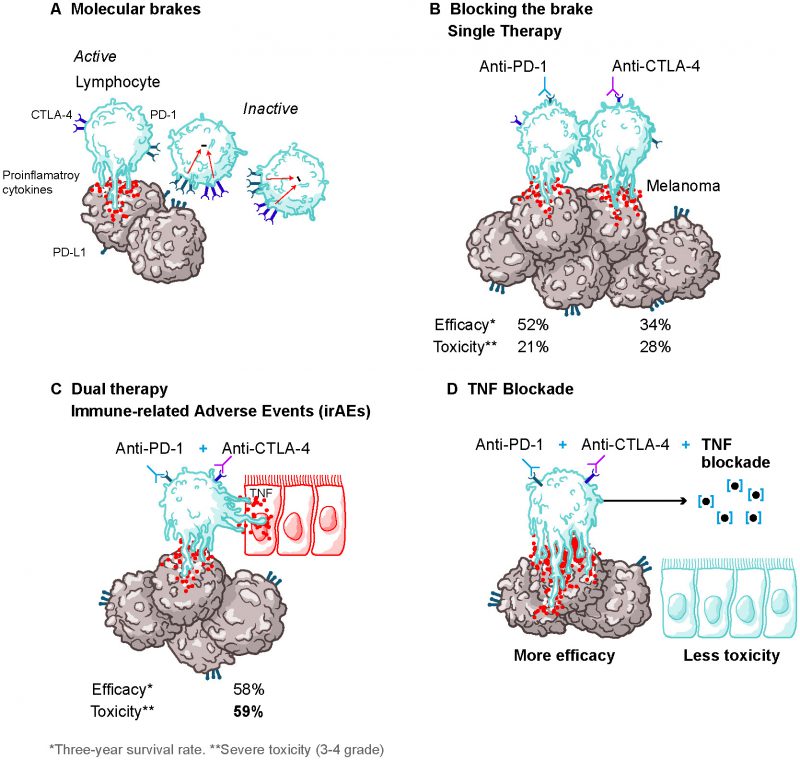Back to article: Impact of prophylactic TNF blockade in the dual PD-1 and CTLA-4 immunotherapy efficacy and toxicity
FIGURE 1: Reducing the toxicity of cancer immunotherapy. (A) The presence on activated lymphocytes of the inhibitory receptors PD-1, which binds to PD-L1, and CTLA-4, which binds to the costimulatory molecules CD80 and CD86, causes immune cell dysfunction facilitating tumor evasion. (B) The introduction of inhibitory blockade therapy that prevents PD-1/PD-L1 or CTLA-4/CD86-CD80 interactions by monoclonal antibody therapy has shown to improve CD8 T cell cytotoxic function and thus has been successfully implemented in a variety of tumors such as melanoma, with little toxicity. (C) Dual therapy that combines anti-PD-1 and anti-CTLA-4 has a more effective anti-tumor response when compared to single therapy, but, at the cost of the increase in the frequency of immune-related adverse events, which induces tissue damage, being TNF an important mediator of this effect. (D) The administration of dual ICB therapy in combination with prophylactic TNF neutralization is able to palliate the treatment-related toxicity side effects while becoming more efficacious towards the anti-tumor response by limiting the activation induced cell death (AICD) on the lymphocytes.

